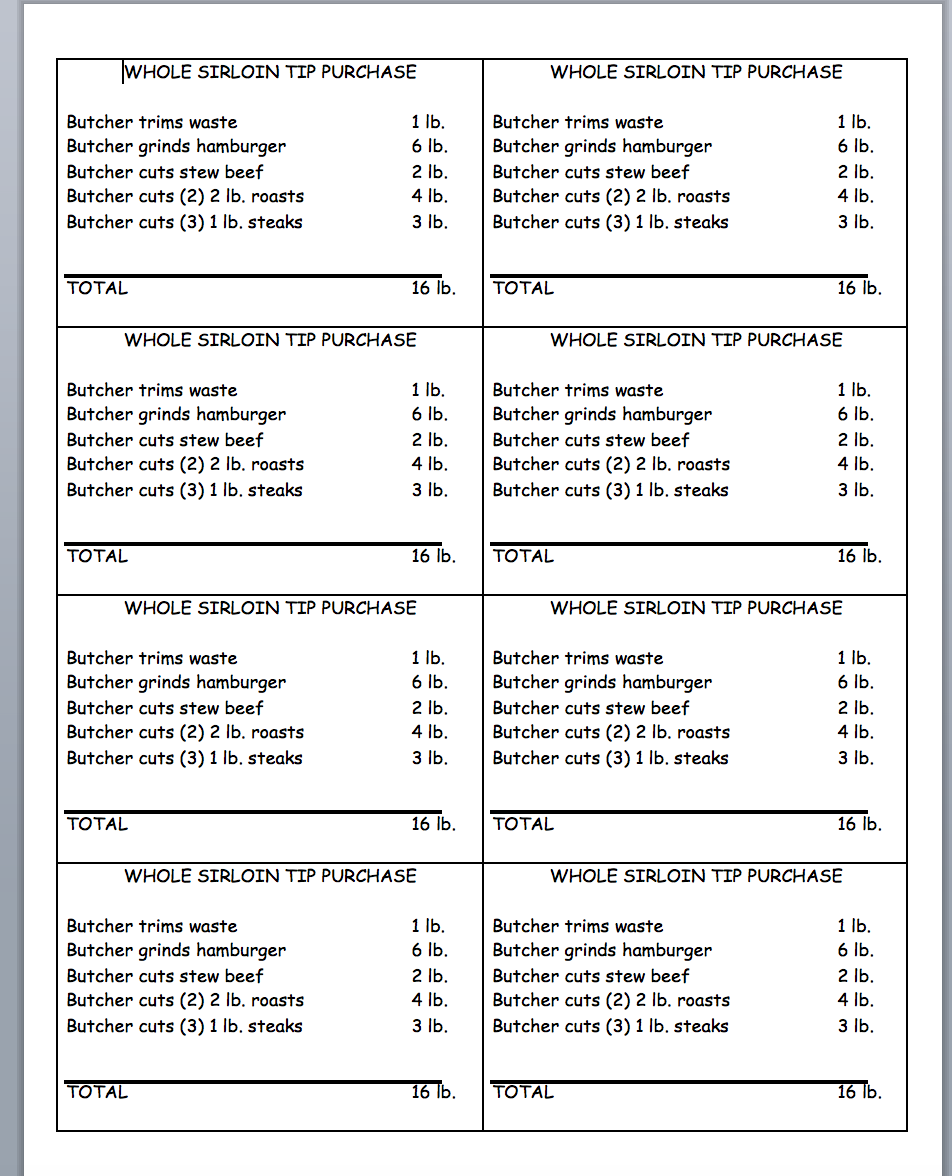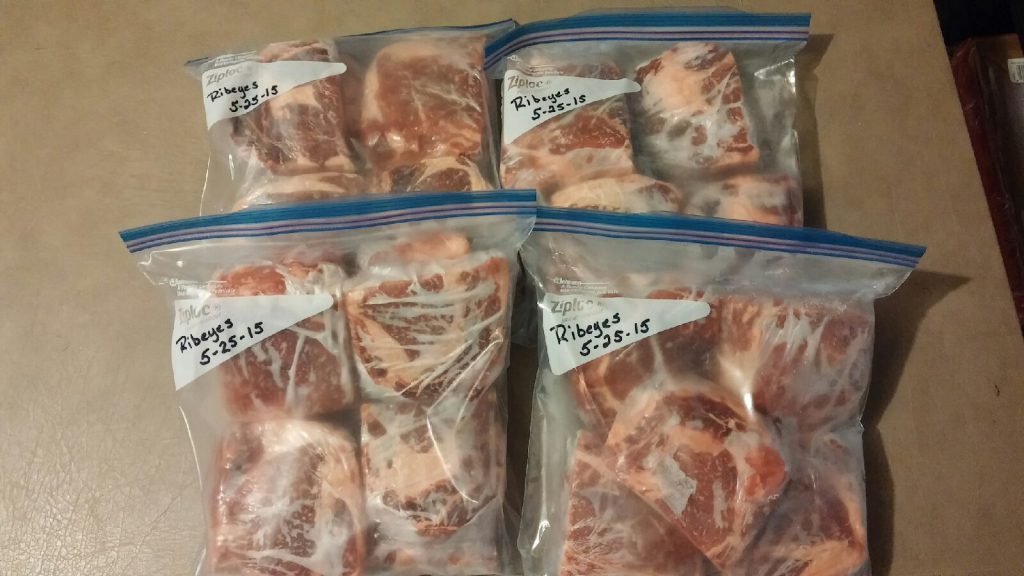I love a good deal whether it’s on clothes or groceries! And I hate paying full price for anything if I can help it. The cost of meat along with everything else continues to rise and has become one of the largest budget items in our family’s grocery budget. Most of us like eating meat so finding ways to make it more affordable is important. If you have freezer space, buying a large cut of meat can be cheaper per pound than buying individual cuts. You can have the butcher at the grocery store cut it up for you into smaller pieces. The butcher should not charge you extra for this service; it’s part of his job. You do need to tell him what cuts you would like or ask him for his recommendation on the best way to cut it.
A large 16-pound sirloin tip could provide you with the following cuts:
- 6 lbs. hamburger or (12) ½ lbs. of hamburger
- 2 lbs. stew beef
- (2) 2-lb. roasts
- (12) 4-oz. steaks or (6) 8-oz. steaks (3 lbs total)
- 1 lb. of trim waste

Buying the whole sirloin tip costs less per pound than buying each of these items individually. To preserve the meat for longer freezer storage, wrap each item tightly in plastic wrap to keep the air from getting to the meat. Then place the wrapped items in freezer storage bags or containers. Make sure you push as much of the excess air out of the freezer bag as you can prior to putting in the freezer. I close the bag all the way leaving a space to insert a straw. Suck all the air out of the bag and pull the straw out while closing the remaining space. This is almost as good as the expensive vacuum sealers. Mark the bags with the contents and the date you put it in the freezer.
My husband loves ribeye steaks. Recently a local store had whole rib-eyes on sale for $6.99/lb. A quick trip to the “club” grocery store down the street to which we belong showed that their whole rib-eyes were $3.00/lb. more expensive. So we bought the whole rib-eye at our local grocery store and had the butcher cut it into 1” thick steaks. At home, I cut each of these steaks into half giving us steaks that averaged about 5-6 ounces. This amount provides an adequate serving of meat for us for dinner. When I finished cutting, wrapping and storing the steaks in the freezer, I ended up with 36 steaks that cost just $3.62 per steak. When did you last pay $3.62 for a rib-eye steak? Since we don’t eat steaks often, this will last us for over a year in the freezer. Because I protected the meat from freezer burn by wrapping first in plastic wrap and then placing in freezer storage bags, my steaks will be as good as the day I put them in the freezer.

Look for ways you can purchase larger cuts of meat to save you money in the long term. It does require you to expend a larger amount of money at one time for the larger piece of meat, but if you plan and set money aside each week or month, it is well worth it when your freezer is stocked with good, quality meat at a reasonable price.
For more information about the different cuts of beef available, check this infographic: http://www.angus.org/pub/beefchart.pdf .
Happy shopping!
Suzanne